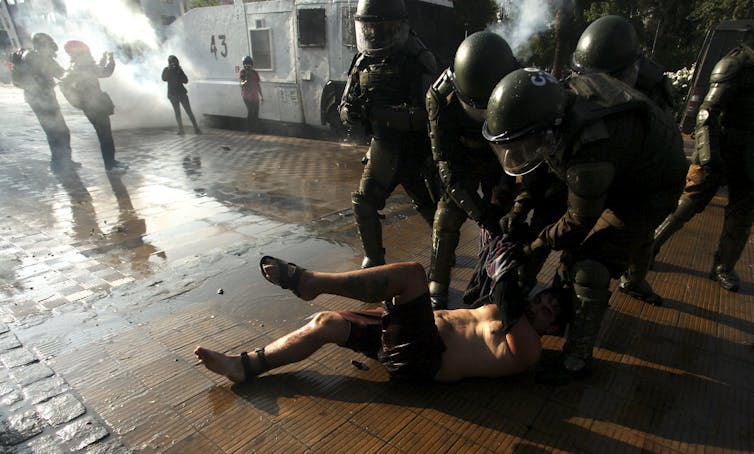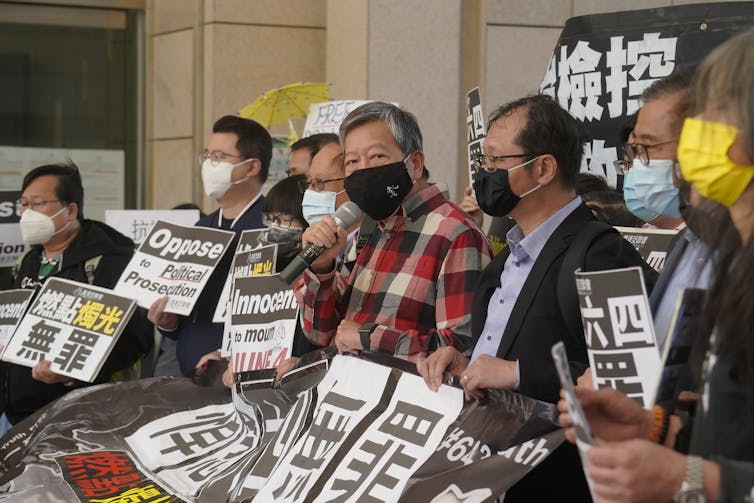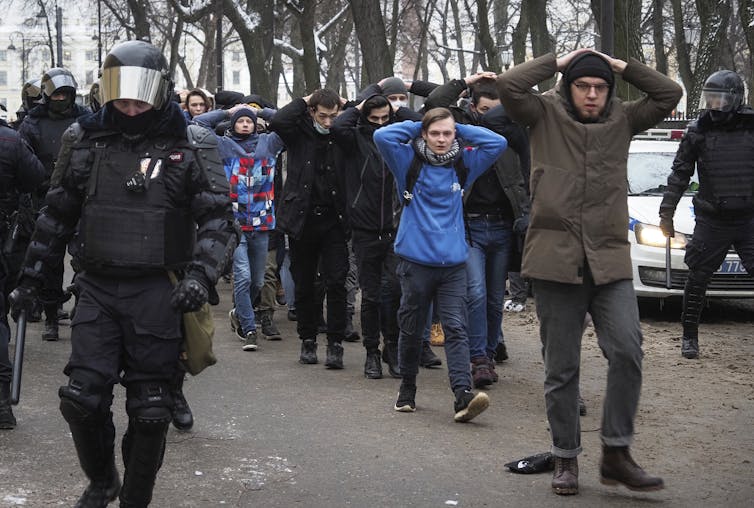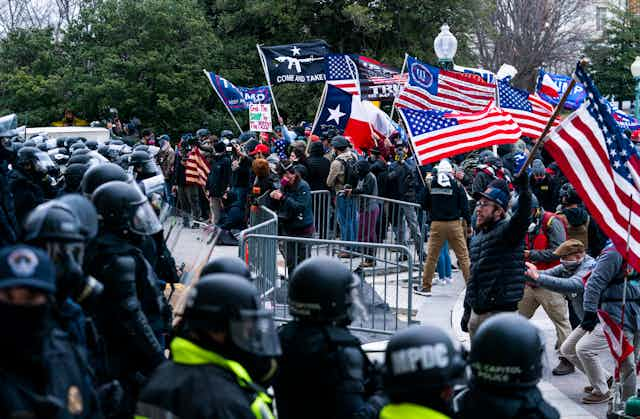Does the world seem in turmoil? COVID-19 has certainly caused great upheaval, but it’s not alone in confusing our sense of what life should be like. Over the past five years, the world has experienced a constant stream of mass protests.
If you live in the United States and Canada, you’ve been a witness to the Black Lives Matter protests, which started here and spread to other countries, and the often violent counter-demonstrations, pro-gun and anti-gun rallies in both countries, and both pro-pipeline and anti-pipeline demonstrations, the latter of which included Indigenous protests.
There have also been demonstrations against violence against women, particularly in Mexico, loosely tied to the #MeToo movement, which started in the U.S. but became international in scope.
The final days of Donald Trump’s presidency saw the storming of the Capitol building, considered the shrine to American democracy, by xenophobes, militia members and QAnon supporters along with other core Trump supporters. They were there to support their president in his bid to overturn the results of the 2020 presidential election, and Trump’s second impeachment trial featured previously unseen footage of lawmakers running for their lives from the mob.
Read more: Why did Donald Trump do better than expected in the U.S. election?
This was perhaps a fitting end to a tumultuous half decade in the American republic, a time when forces demanding change and forces insisting upon a return to an idealized, largely fictional past struggled for control. But the U.S. has not been alone in the battle over the future direction of society.
Worldwide protests
Citizens in Hong Kong have been fighting for their democracy. Protests have broken out in Iran on several occasions since 2017, directed at the country’s stagnant economy and at the Iranian leadership.
Chile too was rocked by violent protests over economic inequality in 2019 and more recently over police brutality. Economic protests in Zimbabwe brought down President Robert Mugabe in 2017, but continued corruption and economic hardship led to more demonstrations in 2020.

Venezuela has seen repeated mass protests against the Nicolas Maduro government over political corruption and a rapidly deteriorating economy. Indian farmers are carrying on a large-scale campaign to bring relief from Prime Minister Narendra Modi’s agricultural reforms, which the farmers feel will lead to the destruction of family farms. Protests have been escalating in Russia since 2020 over political corruption.
Read more: India's farmers are right to protest against agricultural reforms
This is just a sampling of multiple mass protests in recent years. Understanding why they occur will help to explain the frequency. There are some common elements in most mass movements.
For and against change
Some movements are about change and some are against change. All start with people who feel something they urgently need is being denied by authorities. If that denial persists, eventually frustration leads to protest.
Protests that are sustained by strong frustrations, or even desperation, will endure, grow and eventually usually lead to violence, either by the demonstrators or their opponents.
At that point, authorities have to decide whether to crush the protest movement or provide concessions. At the moment, the Chinese government is imposing a law that essentially sends anyone who opposes or criticizes the Chinese-controlled government of Hong Kong to mainland China for trial on what would be loosely termed charges of sedition or treason.

The pandemic has made large public protests dangerous, and the number of people fleeing Hong Kong suggests the Chinese government has won, as governments usually do.
Social media often fuels today’s mass protests. Citizens can now connect with others who are equally frustrated about political and economic issues and inequities, and can organize demonstrations. The first real cross-country protest by Indigenous people in Canada, the Idle No More movement, was largely organized on Facebook.
Not surprisingly, dictatorships, and even some democratic governments, often shut down the internet and cell phone service during mass protests.
What next?
Will millions continue to flee Venezuela because the government has successfully used brutal repression to control demonstrators while the economy implodes?
Will Vladimir Putin’s widespread use of force in Russia curb protests against corruption and abuse of power?

Will the Modi government in India turn to increased use of force if farm protesters become frustrated with the lack of action on their grievances and turn to violence?
And what about the U.S. now that Trump is out of power?
I’ve previously identified groups who were core Trump supporters, such as evangelical Christians; industrial workers who have lost their jobs because of globalization and those whose livelihood depends on those workers; xenophobes; and white supremacists.
Read more: Why hard-core Trump supporters ignore his lies
These are among the people who came to Washington on Jan. 6 to demand Congress refuse to recognize the outcome of the election. All claim they feel ignored by government. But their view of what America should be was leveraged by the president, who gave frustration a voice. While not all took part in the insurrection, many did, having been given permission by the president to do so. Here we have a variation on usual protests — authority encouraged rather than opposed protest.
Biden’s attempts to ease tensions
President Joe Biden is making efforts to address some economic grievances. He’s supporting a massive aid package for Americans, and his Buy American policies will sit well with those who are angry over the flight of manufacturing from the U.S. He’s also proposed subsidies for certain industries that could create jobs, taxing products made overseas by American companies and boosting wealth taxes.

Evangelical Christians will be harder to pacify. Though he’s a devout Catholic, Biden’s liberal views on abortion likely mean evangelicals will stick with the Republican Party.
Some xenophobes will be placated by America First policies, but many will be angered by Biden’s easing of restrictions on immigration from Latin American countries.
By prosecuting identifiable attackers in the Capitol insurrection, the government is doing the right thing to prevent a similar violent protest.
Militias and other right-wing extremists seem to be a feature of American life. They have largely remained in the shadows until Donald Trump gave them legitimacy. With the current prosecutions, and undoubtedly increased surveillance, they will once again be pushed into the background.
If the Biden administration can show that it’s taking action to address widespread hardships — particularly those of African Americans, who have endured generations of systemic racism and inequality — the U.S. should be able to move forward from this period of sustained mass protest. It remains to be seen whether that’s possible in other regions of the world, where the same governments remain ensconced — for now.

